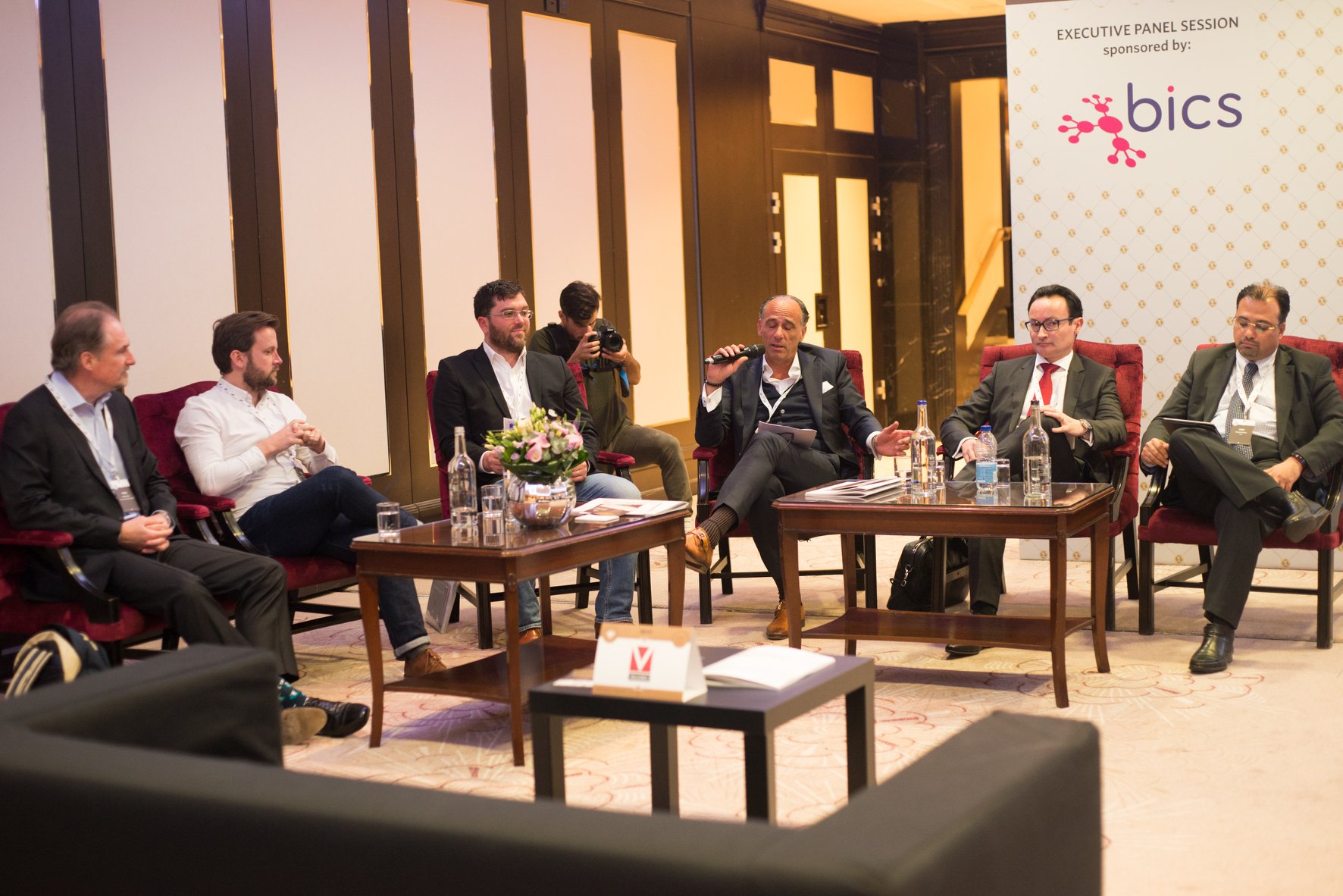Zoom on Europe 2018 GCCM London
On February 14, I was attending the Europe 2018 GCCM (Global Carrier Community Meeting) in London. I was invited to participate to a panel to discuss the following topic: “New Business Models around Cloud for Service Providers”.
With Erik van Stokkom, MGI Board member, as moderator, the various panelists included Richard Warner, Networking Partner Lead EMEA at Microsoft; Matthew Whalley, Director and co-founder at Ilex Content Strategies; Bernhard Pusch, Head of Carrier Sales EMEA at Telstra; AbdulAziz Qambar, CEO of DigitalMe and Divya Ghai Wakankar, Head of Innovation and Next Generation Services Product Management at BICS.

There was a consensus among the panel to agree that the traditional business models are still valid, but when we look more into details using the classic Business Model Canvas1, it appears that when it comes to cloud services the channels have evolved.
In the case of an IXP like France-IX, cloud providers are connected to the platform and can provide their services either directly through the peering platform or more recently via a marketplace for premium services.
Because of such channels changes, the value proposition also is different. There is a significant economy of scale for sellers and buyers as everything is sold and is available in one place. There is an unprecedented agility: service is delivered within hours instead of days or weeks, multiple choice for a buyer to select a cloud provider, and great opportunities for sellers to address potential customers. In terms of revenues, it does create new opportunities for the sellers and the IXP and some costs savings for buyers. The cost structure is also changing: one single port to sell various cloud services to many customers, one single port (the existing peering port) for the customer to buy services. The revenue streams are changing both for the cloud providers and the buyers, also leading to grow the global volume of traffic through the IXP. The customer segments are now more diverse because the profile of customers is evolving: a few years ago, only ISPs, carriers, hosting providers, CDNs were connecting to an IXP; now, corporate companies are also joining because they see the platform not as a technical tool (peering is just a consequence), but as a global commodity that is brought through the marketplace. This is emphasized by the fact that a lot of corporate companies have integrated the cloud services into their digital transformation and strategy.

When looking at the elasticity of the cloud and how it does help to crunch the huge volumes of data, we can also see the added value of some cloud services here. For instance, on France-IX some providers are delivering Anti-DDos scrubbing services, allowing customers of the IXP to protect against security issues. Such services can be easily delivered through the platform because of significant over-provisioning integrated as a global engineering rule, and the capability of the cloud provider to handle large volume of data.
We can certainly bet that the next steps for cloud providers delivering services through IXP (or through network operators) will be to work together closely to automate as much as possible the delivery: provisioning of the circuits and automatic billing, with cloud services brought in real-time as an on-demand service, activated or deactivated very quickly.
1 The Business Model Canvas is a tool developed by Alexander Osterwalder designed to review and assess a company’s business model, including 9 blocks (Key Partnerships, Key Activities, Key Resources, Cost Structure, Value Propositions, Customer Relationships, Channels, Customer Segments and Revenue Streams).